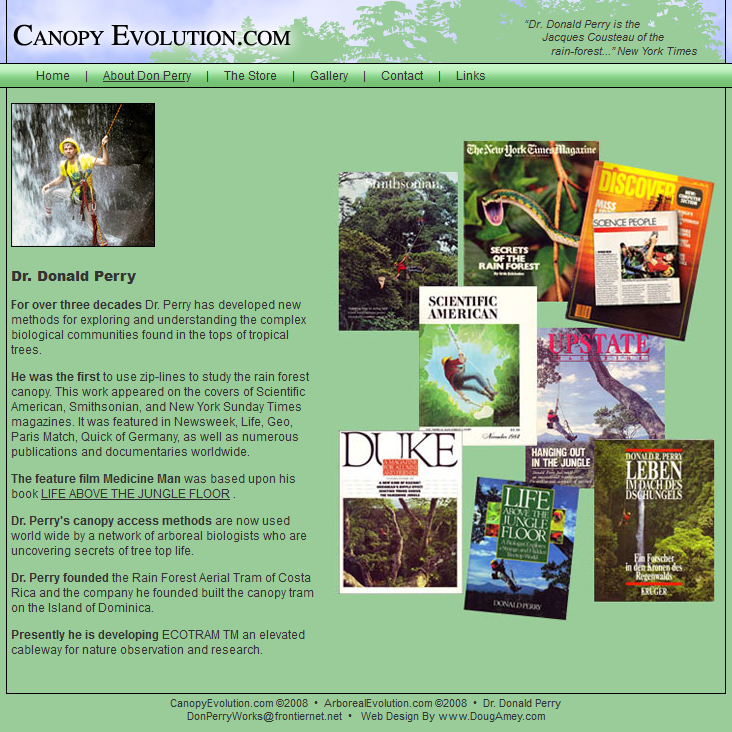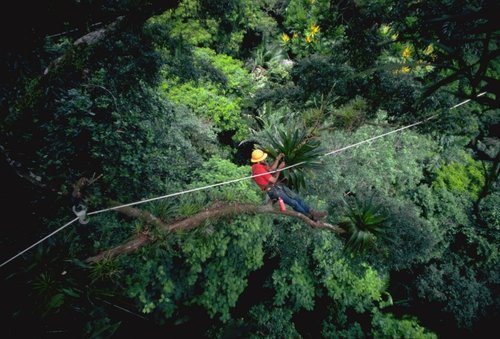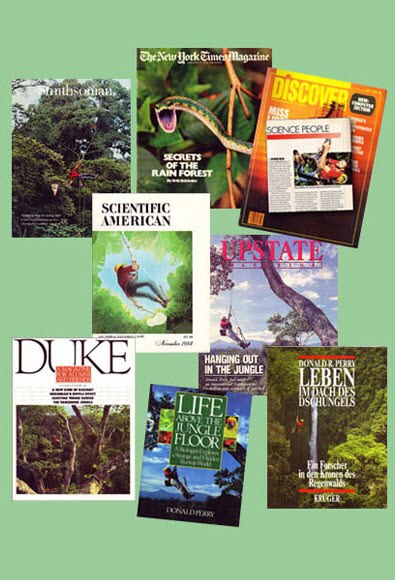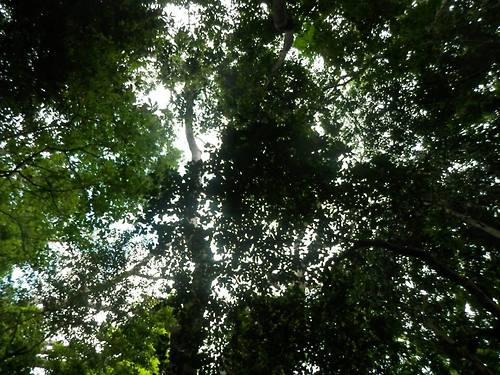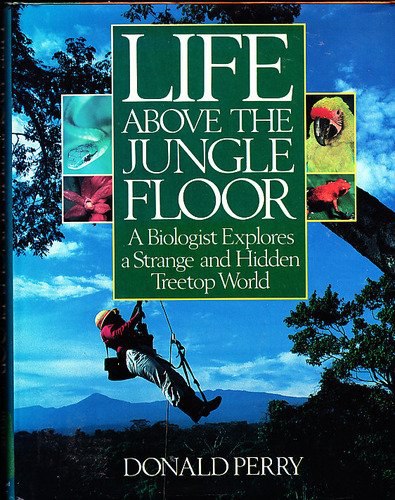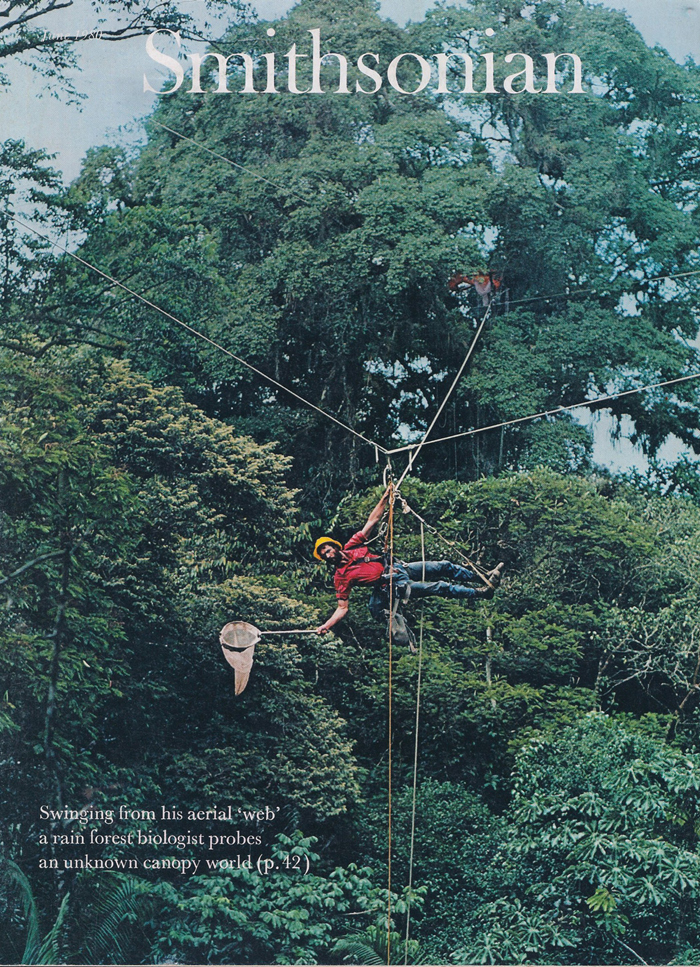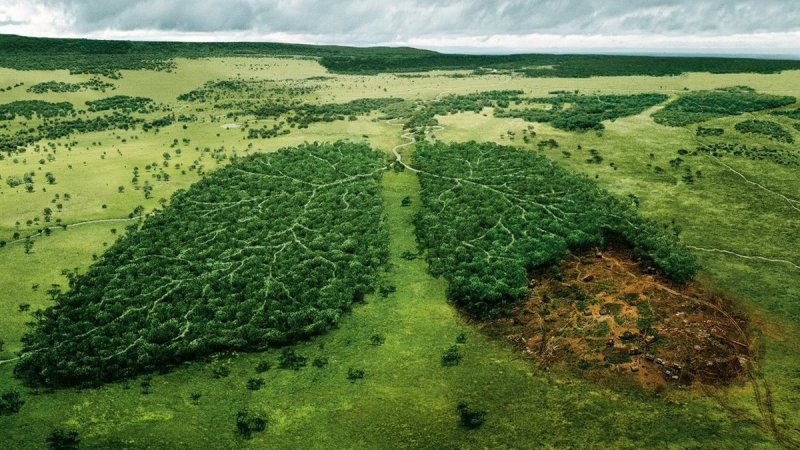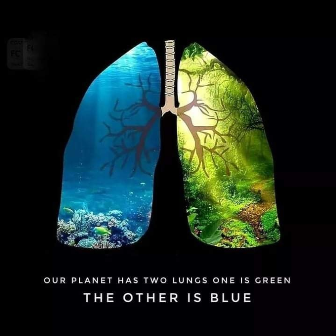Rainforest Canopy Don Perry
On Top of the World -- and why we need to protect life up above
Looking up with Don Perry, the 'Jacques Cousteau of the Rainforest Canopy'
by Steven Schmidt / GreenPolicy360
Biological diversity in unequaled abundance: Ascending to study 'Life Above the Jungle Floor'
Richness of life within the rainforest (jungle) canopy web: Beginnings of rainforest canopy science in the 1970s and 80s
○ ○ ○ ○ ○ ○ ○ ○ ○ ○ ○ ○ ○ ○ ○ ○ ○ ○
'Quick Zip' Ecotram Updates:
MAN IN THE CANOPY
Today’s canopy zipline craze began in 1974 with Dr. Donald Perry, who received his PHD from UCLA for investigating rain forest canopies. He pioneered an interconnected web of ropes strung between treetops that became the world’s first canopy zipline. It appeared on the covers of the Smithsonian and Scientific American magazines bringing international attention to the canopy and its complex communities of life.The conception and evolution of the canopy zipline has been chronicled in and excellent Tico Times article: Was Recreational Ziplining Really Invented In Costa Rica? Yes, Indeed.
With a Rolex Award for Enterprise in 1984 and as a fellow of the Institute of Current World Affairs, Dr. Perry’s team developed the first cableway for scientific research of the rain forest canopy. This system, known as the Automated Web for Canopy Exploration, attracted many tourists who wanted a ride. After all, it was the most-thrilling rainforest observation vehicle in the world.
To serve growing interest, Perry secured venture capital to develop and build the Rain Forest Aerial Tram in Costa Rica. The Aerial Tram was the first zero-gauge cableway and the world’s first canopy “ski-lift”. This system has virtually no impact on nature and it has greatly expanded interest in canopy visitation.
__________
January 2013
On Top of the World
Looking Out with Don Perry, the 'Jacques Cousteau of the Rainforest Canopy'
by Steve Schmidt - GreenPolicy360 Siterunner
I want to say a few words about Don Perry, Dr. Perry, who swung in and posted a couple comments yesterday, thirty plus years after we first started publishing Don's pioneering work 'up above'.
Be aware, Don is not your standard scientist who has dwelt in academia, collecting accolades and plaudits for his lifetime of work and explorations of the bio-universe. Don has gone on from UCLA to literally change the way we see our world.
As I used to say about Don, when we were working together back when I lived in LA and he was starting his career that would revolutionize the science of tropical forest study, Don is unique in his field, he's a pioneer (and "bioneer"), he's an explorer, an inventor. Don invented new techniques and methods for ascending and studying the 'real jungle', up above far from LA's glam, and proceeded to enable and show us what the resplendent, amazing rainforest, the richest biosphere on earth, the canopy, was like and it was wonderful... first-ever pictures and reports and science from on high. I was privileged to help as his representative and we saw Don's visions reach audiences around the world as he opened eyes to the eco-wonders of the environment we live in and the world we came from long ago, that is, if you believe in evolution... Don was a "Jacques Cousteau of the Rainforest Canopy." I meant the words when I said them and still do. Don's pioneering work has been featured in Scientific American, National Geographic, Smithsonian, New York Sunday Times magazine, Life, Newsweek, Paris Match, Quick of Germany, Popular Science, and many more popular and scientific media.
I have to say that Don's career is one-of-a-kind, an unparalleled feat of brave, courageous ascents and creative imagination and engineering that followed, from Topanga canyon w/ Southern Cal beginnings, to cross-bows firing lines and stringing canopy webs and going up himself, then a first-gen automated canopy exploration web system, to the first aerial, eco-trams for non-scientists and tourists and eco-preneurs, and zip line projects for all of us world over, Don has been reaching up for decades, surviving close calls and still going strong.
Don has changed the way we see "the jungle". I can't remember how many times I've explained over the years that the jungle isn't the way most everyone thinks about it -- it's not about Victorian-like stories, there's no machete at the ready, natives chopping away and a gun slung on a strap on your shoulder like Stanley and Livingston or Tarzan or Sheena, Queen of the Jungle, Hollywood's film versions of the jungle. Rather, the real jungle's up there, the richest biosphere, 60, 80, 100, 120 feet up and higher (think Amazon and meters if you want.) It's really up above, what I used to call "the cradle of new life forms", where evolution is still happening and happening fast... we're talking about life forms few have seen and studied, a gazillion types and insects and small creatures and green species, varieties, animals whose lives are lived out quickly and generation to generation in a geo-minute or -second, survival or not and adaptation happening in evolutionary timelines.
We now are seeing and witnessing and in the past few decades realizing the impacts and dangers to the rain forests, even before we discover the genetic environments we're wiping out as we clear cut and burn and rip away, humans interjecting profound change by destroying the rain forests worldwide. This story that science is now beginning to bring to us stands in contrast to green biodiversity and saving life, a pro-life position, where science and voices like Don's and those of us who've lived the life of being green are telling us - ACT, ACT NOW, for our own global health and well-being, act to save, be "conservative", truly conservative, not "crazy conservative", pay attention to the facts, conserve, conserve now, fast
Don was (and is) an original eco-explorer who realized the need to see what is at stake, he saw and he created an EcoTram, as it's now called, one of the first eco-explorer ventures designed to teach up close. He's devoted himself to the work, taking science to the next step, acting on his discoveries. The eco-trams jump started eco-tourism up above in the canopies, as they carry eco-tourists thru the tropical forests where they can come eye-to-eye with life's rich diversity. In Costa Rica as one of his trams, a first, has been running near San Juan, for years w/ travelers and adventurers from Europe, the US, Asia and around the world experiencing personally the real, diverse variety of life in the canopy and, as Don and our hopes began to come to be, all of these first-timers could become evangelists, returning home to tell their stories of what the real world is like up there and why it's worth saving. There's no better way to teach than up close, 'hands on', as Mr. Wizard, Don Herbert would tell me when I was editing his work. Up close in the canopy, eco-visiting people can sense, feel, touch, smell the richness and truly appreciate what it is, what we are trying to save when we talk about saving the tropical forests, the lungs of the earth and much more. It's about Gaia, it's about breathing and much more
Thank you Don
Thank you for going up there in the old days and ever since
The trees are where we came from... spires, in'spiration' we 'aspire' to a 'heaven' up above, cathedrals spire above, our language imagining goodness as we look up... and as we've evolved since our descent, let's rediscover what we left, rich, very rich and needed life
Thank you, you've battled and your new directions, your work on more e-trams, your questioning of human evolution beginning w/ us as the "greatest climbers", your thoughts here on the future of sea rise as you wrote about yesterday on my my FB wall as I mulled about Doonesbury's myFacts take on global warming deniers, (especially pertinent to us folks who live barely above sea level), I want you to know you're truly appreciated
_________________________________________________
Rain Forest Canopy -- and Climate Change/Global Warming
Significance of the Rain Forest Canopy in Ecological Processes
Canopies of all types, including boreal and tropical forests, play a crucial role in the maintenance of ecological processes, although thus far, the attention of researchers has tended to concentrate on those in the tropics, rather than those in temperate climates.
The forest canopy is the principal site for the interchange of heat, oxygen, water vapor, and carbon dioxide. It has been estimated that most photosynthetic activities in the biosphere occur in the canopy. Forest canopies account for almost half of the carbon stored in terrestrial vegetation and fix more carbon per year than any other habitat. Ecophysio-logical studies are therefore crucial to predict the impact of increasing atmospheric concentrations of carbon dioxide in global warming. Thus, forest canopies both control regional climate and play an important role in regulating global climate.
~
What the rainforests do and why they need to be preserved and protected
'Carbon fixing', photosynthesis, species, ecosystems, biodiversity
Carbon Fixation
Carbon Sequestration
Biodiversity
_____________________________________________
"It is possible that we could still save tropical forests and ourselves... each of us is responsible."
"Life Above the Jungle Floor, A Biologist Explores a Strange and Hidden Treetop World"
Simon & Schuster, copyright 1986
One can almost hear an uncomfortable rustling in academic halls as new discoveries bring fascinating pieces of the canopy puzzle into place. The emerging picture clearly shows that the canopy has been a foremost habitat in the evolution of life.
http://www.amazon.com/gp/product/0671544543/ref=olp_product_details?ie=UTF8&me=&seller=
http://www.amazon.com//gp/offer-listing/0671644262/sr=/qid=/?condition=new&tag=bf-ns-author-lp-20
http://www.amazon.com/gp/offer-listing/0671544543/ref=tmm_hrd_new_olp_0?ie=UTF8&condition=new
__________________________________________________________________
"It was a change in perspective, an awakening, deja vu.... I felt I belonged there"
The canopy world flourishes at the equivalent of the “15th floor” of the rain forest, 50 metres up. It is difficult to study from ground level because of the dense vegetation that obscures the world above. Three-quarters of rain forest trees have limbs that are too weak to climb. Many rise 25 metres without branching. (One-step) Snakes, scorpions, numerous ants and troublesome insects are a further deterrent.... The rain forest canopy, Perry points out, contains "the most complex communities of life on earth".
>Dr. Donald Perry, founder of The Rainforest Aerial Tram, pioneered the exploration of the canopy beginning in 1974. His innovative methods of access include rope systems and an automated cable way. Of his latest idea he states, "no system in the world can offer this intimate proximity to such an extensive volume of rainforest. Knowledge that will help save forests will finally be within reach." Dr. Perry began work on an 'ecoTram' after becoming convinced that the only way to stop destruction of the rainforest was by showing not only Costa Ricans but people throughout the world the wonder of this unexplored habitat and by creating an alternative to unsustainable exploitation of the forest. Dr. Perry's canopy access methods are now used worldwide by a network of arboreal biologists who are uncovering secrets of treetop life.
Rainforest Alliance - Forests are home to some two-thirds of the world's plants and animals. As they are cleared and degraded, the unique flora and fauna that depend on these ecosystems become threatened with extinction.
>In 1978, studying the role of herbivorous bats in dispersing seeds of the monkey-pot tree in Costa Rica, Perry hit on the solution: a special web of ropes and cables that permitted unrestricted movement across a canopy. With John Williams, an engineer friend from California, Perry developed a system for a platform, 400 metres of rope web, pulleys and descent ropes, with which he could move from ground level to above the tree top and anywhere inside the canopy world. "The combination of the web and the descent ropes gave unrestricted movement through a volume of forest an acre in area and 30 metres in depth, opening great biological wealth to observation," Perry recalls.
With Williams he designed the Automated Web for Canopy Exploration (AWCE), using a stainless steel cable, a rigid chair and wireless controls. This took much of the fear out of canopy research and enabled two researchers at a time to manoeuvre up to the canopy at 30 centimetres a second. The AWCE design won him a Rolex Award, and Popular Science said it "promises to open the jungle to research the same way scuba gear opened the oceans".
Popular Science's description (including a reference (above) we were offering to the work of Cousteau, a comparison between the rich life in the oceans and rich life of rain forests and the scientific breakthrough of Cousteau's invention of the scuba gear enabling close up studies and Don's invention of climbing gear enabling science close up and personal) - http://books.google.com/books?id=J3sUn8WV22MC&pg=PA87&lpg=PA87&dq=don+perry
>Don Perry, Ecotram's founder was instrumental in igniting Costa Rica’s ecotourism-based economic transformation and a whole new field -- the scientific investigation of the most complex communities of life on earth found living on high tropical tree limbs. This work was responsible for the zip-line fad sweeping the globe as well as the use of cable-ways to view nature. Now Ecotram LLC has added a new investigative and ecotouristic tool to its lineup of cable-ways for exploring and studying nature. [LinkedIn]
Perry's Rain Forest Aerial Tram in Costa Rica.
The Aerial Tram was the first zero-gauge cableway and the world’s first canopy “ski-lift”. This system has virtually no impact on nature and it has greatly expanded interest in canopy visitation.
http://blog.rolexawards.com/2013/07/ecotrams-canopy-evolution-2/
_________
Up in the Rainforest Canopy with Don Perry, My Friend, an Amazing collaboration
http://floridawestcoast.tumblr.com/post/41543294774/up-in-the-rainforest-canopy-with-don-perry-my
_________
Steven Schmidt: ... What we are trying to save when we talk about saving the tropical forests, the lungs of the earth and much more.
It's about Gaia, it's about watching the planet breathing and much more
- Atmospheric Science
- Biodiversity
- Carbon Sequestration
- Climate Change
- Ecotourism
- Extinction
- Forests
- Rainforest
- Sustainability
- Sustainability Policies
- Earth360
- Ecology Studies
- EOS eco Operating System
- Green Graphics
- Green Politics
- Natural Capital
- Planet Citizen
- Rain Forest
- Earth Observations
- Earth Science
- Forest
- Global Security
- National Security
- Nature
- New Space
- Planet Scientist
- Biogeosciences
- Climate Policy
- Geophysics and Geochemistry
- Geology
- Geophysics
- Hydrology
- Natural Resources
- Bioneers
- Earth Law
- Land Ethic
- Rights of Nature
